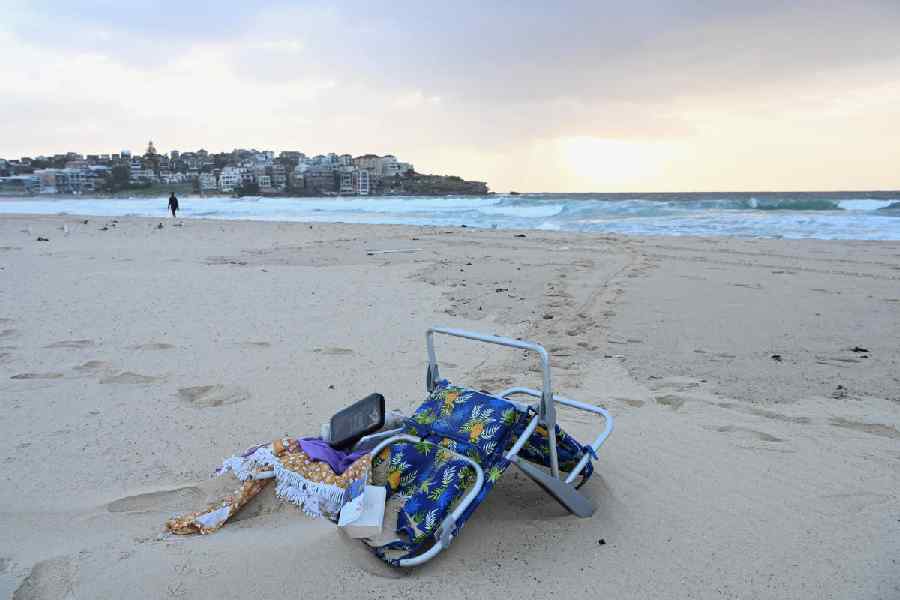 |
| Heads held high: India’s Paralympian team with high commissioner Bhagwati (in red tie) |
Paralympics and the road to Rio
Judging by the way everyone wanted to be photographed with H.N. Girisha, a hero’s welcome awaits the Paralympian silver medallist in the high jump (1.74 metres) when he gets back home to his village of Hosanagara in Karnataka.
The Indian contingent, including 10 athletes, was due to arrive at India House for a welcoming reception last Thursday from 5.30pm to 7.30pm.
Just when I had given up hope, their bus drew up outside India House at the dot of 7.30pm. Not having had any Indian food to speak of since their arrival at the Games, the samosas and the kebabs must have tasted extra delicious to people who had survived on fruit in the Paralympic Village.
As the team posed for a group photograph, the high commissioner Jaimini Bhagwati noted this was an historic occasion.
“The Paralympics won’t return to London in our lifetime,” he said.
“As far as we are concerned this is as important as any other form of Olympics — we wanted to honour you,” he added.
Rathan Singh, chef de mission, defended himself against the charge that the team was top heavy with officials while coaches had not been allowed stay inside the village with the athletes.
The quota had been fixed by the London organising committee, he argued.
“We had 10 athletes — so we got a quota for only six (accompanying) officials,” he said. “I allocated (passes for) two officials, two coaches, (and) two escorts. Escorts and coaches are very, very important. At the same time the officials are also very, very important. There is much logistic work (to be done) — for each discipline we need one leader. That leader has to go to (the) competition place and view details of the athletes — what they will wear, socks, shoes. If there is (even) a small mistake they (the authorities) will not allow them to participate.”
India’s Paralympic movement began in 1992 with four disciplines. “Now we have 15. But to come up to the world standard we require (more) time. We were not able to participate in (the recent) world competition otherwise (even) this time we could have sent a minimum of 25 members.”
And Rio in 2016?
“Rio, we can send more than 50 athletes,” he predicted.
 |
| Talent pool: Amit Kumar Saroha and Jaideep Deswal (standing) |
Haryana boys
Two members of the Indian Paralympic contingent — Amit Kumar Saroha, 27, and Jaideep Deswal, 23 — are Haryana boys who throw the discus but their stories are different.
While Jaideep had polio in childhood, Amit’s spinal cord was badly damaged in a road accident five years ago when his car was smashed by an oncoming truck — “I was in hospital for six months”.
Unlike some ultra-orthodox Hindus, neither subscribes to the notion that disability is a punishment for misdeeds committed in previous lives.
Amit laughed scornfully: “Yes, because of my paap, I have made it to the Paralympics.”
His life was transformed when a foreign friend took him to the Paralympic Games in Bangalore in 2009.
Last week he came 8th, and Jaideep 7th.
“I trained for six months, getting up at 3am because it is difficult to train in 45°C temperatures during the day,” said Amit, pointing out that those winning medals had been training for at least four years.
Both Amit and Jaideep spoke of encouraging trends in Haryana where the state government had put sports for the disabled and the able-bodied practically on an equal footing.
What they say they are looking for is not pity but practical support.
“There is no lack of talent in India,” emphasised Amit.
 |
| BATTLE OF THE BLADES: Jonnie Peacock (fourth from left) beats Oscar Pistorius (third from right) in the men’s 100m |
Blade runner
Since I was sitting in a straight line with the finish, I had a good view of Jonnie Peacock of Britain beat Oscar Pistorius of South Africa in the blue riband race of the Paralympics — the final of the men’s T44 100m final.
Pistorius, who has been built up as “the poster boy of the Paralympics”, had hitherto been hailed as “the fastest man with no legs”.
I am glad I stayed to watch the medals ceremony when what seemed like the entire stadium erupted as 19-year-old Peacock collected gold.
What is remarkable is the technology that goes into the manufacturing of the blades worn by Pistorius on both legs and by Peacock on his right leg.
Pistorius, probably the best-known disabled athlete in the world, “uses prosthetic running blades, which are produced by a number of different companies including Otto Bock”, according to one explanation I found. “The company combines a customised socket liner and prosthesis with a flexible blade, made by building up more than 80 layers of carbon fibre. The blades feature spikes just like running shoes.”
After being beaten by Alan Oliveira of Brazil in the 200m, Pistorius complained that the latter’s longer leg blades gave him an unfair advantage by increasing his stride length.
But Steve Haake, head of the Centre for Sports Engineering Research at Sheffield Hallam University in the UK, says there is no evidence that longer blades are better.
Power within
 |
| DOWN BUT NOT OUT: Martine Wright (hand raised) during the women’s sitting volleyball |
Donald Rumsfeld, former American defence secretary, had a point when he said that in life there are unknown unknowns — there are things that we do not know we do not know.
“Women’s sitting volleyball” fell into this category for me, I am sorry to say. It was played by, among others, Martine Wright, whose legs were amputated above the knee because of injuries she sustained in the suicide bombings of July 7, 2005, in London.
It was mesmerising watching swimmers with no arms, for example, receive bouquets on the victory podium. I saw one swimmer deftly tuck the bunch of flowers under one arm with his right stump. He used the other to flip his medal so that it landed on top of his outstretched left stump.
Metal appeal
One of the most impressive sights at the Olympic Park is the “Mittal Monument”, especially at night, when it is lit up in red.
The ArcelorMittal Orbit dims and glows in the dark as though signalling to outer space with a message from Lakshmi Mittal. (“LM here — any iron going spare on your planet?”)
Having invested £16m of the £19.1 cost of the Anish Kapoor designed sculpture, he has got more than his money’s worth. Right through the Olympics, the BBC’s on-site studio had the structure in the background.
Reviews from art critics have been harsh. But the monument is becoming part of the landscape.
I noticed an excited little boy on a Jubilee Line underground train coming into Stratford station pointing it out to his mother: “Look, the Orbit.”
One night I even heard a young man — one of the 80,000 who come daily to the stadium — make a promise to his girlfriend: “We haven’t been up there but one day we will.”
Tittle tattle
One enterprising church near Croydon, south London, has jumped on to the Olympic bandwagon with the following billboard: “Olympics! Everyone’s a winner in Jesus’ team. Ever thought of joining?”
Opinions might vary on the correct use of the apostrophe in this context but anyone brought up on Nesfield’s Grammar would probably be more inclined to join “Jesus’s Team”.










